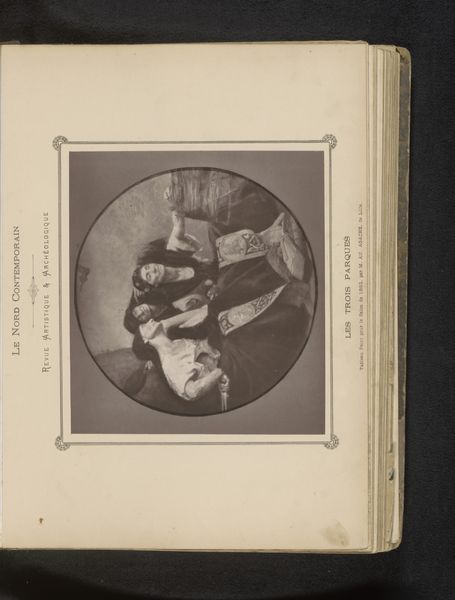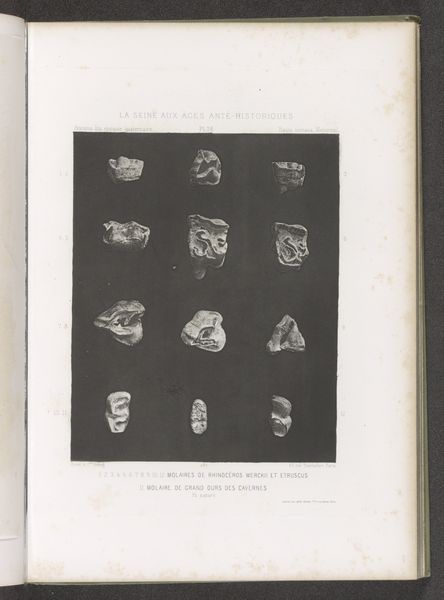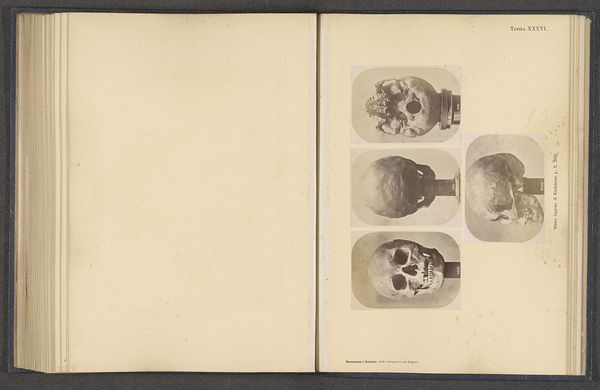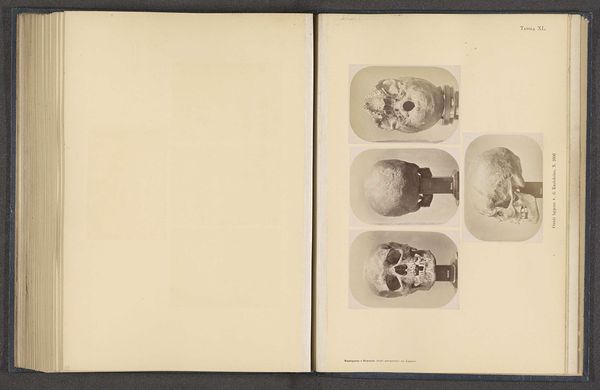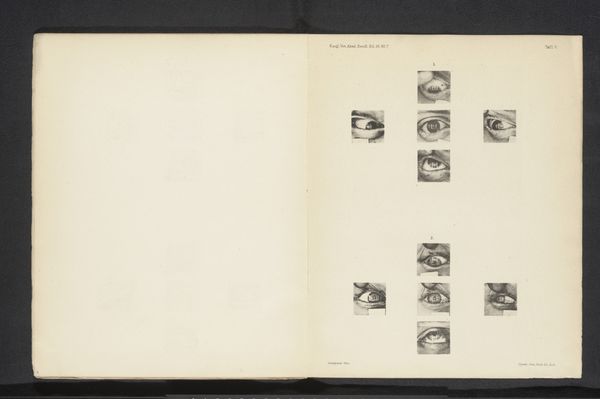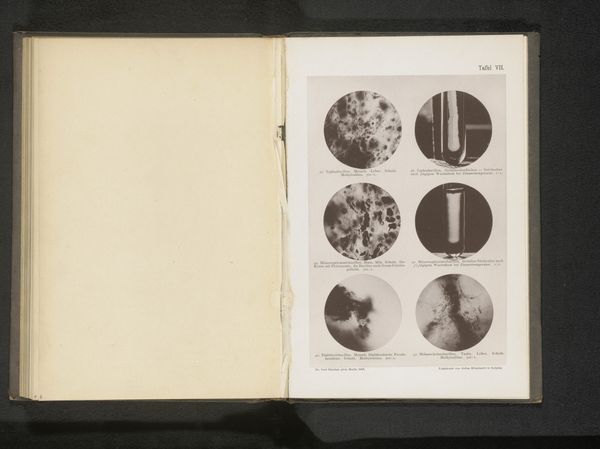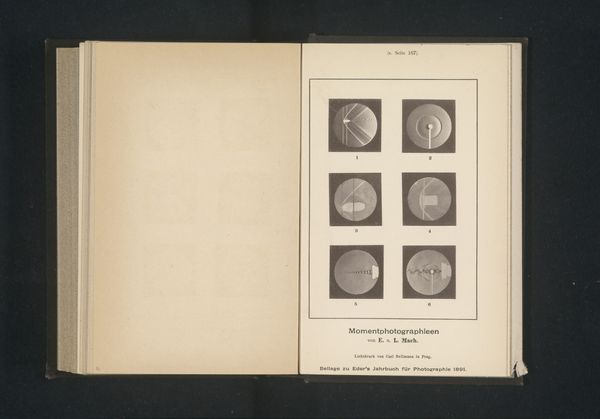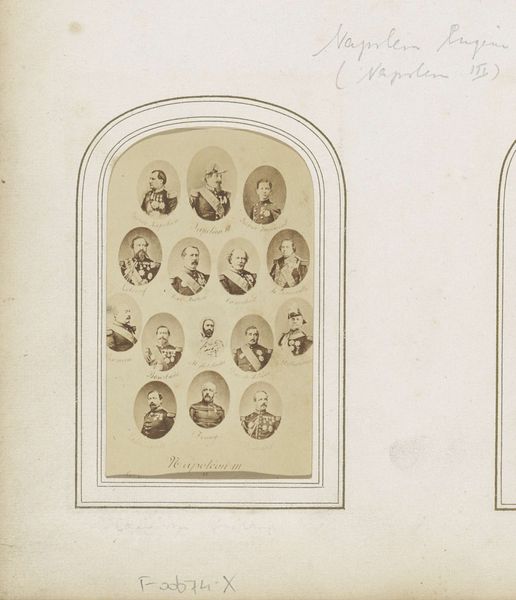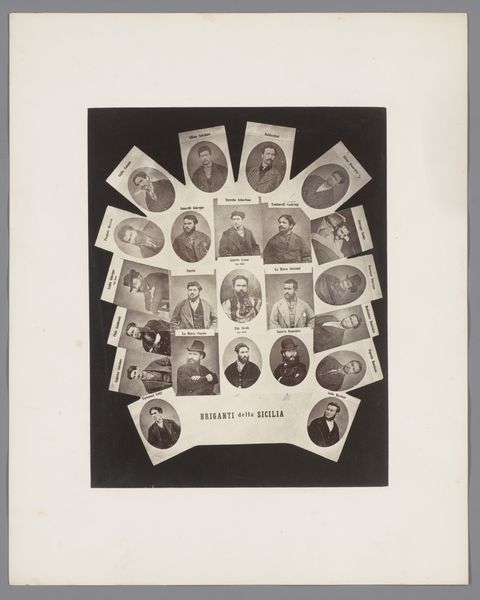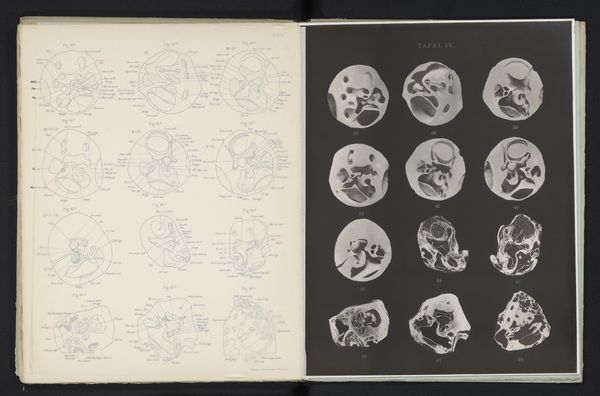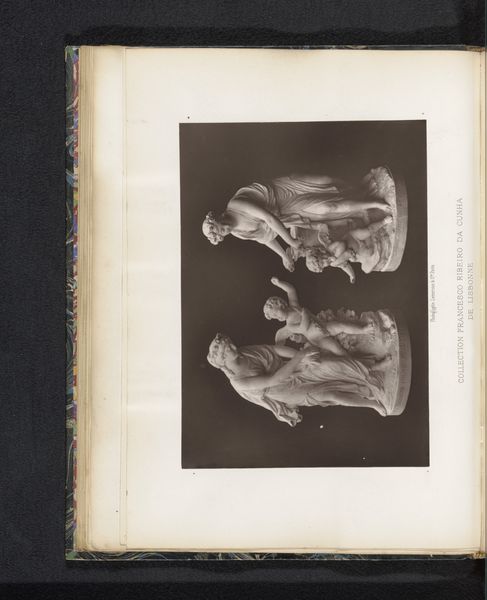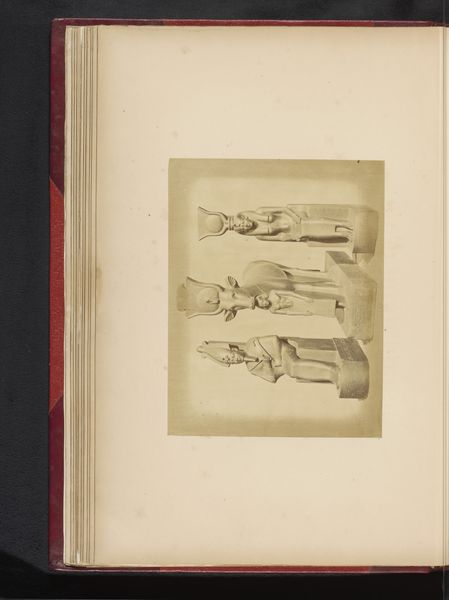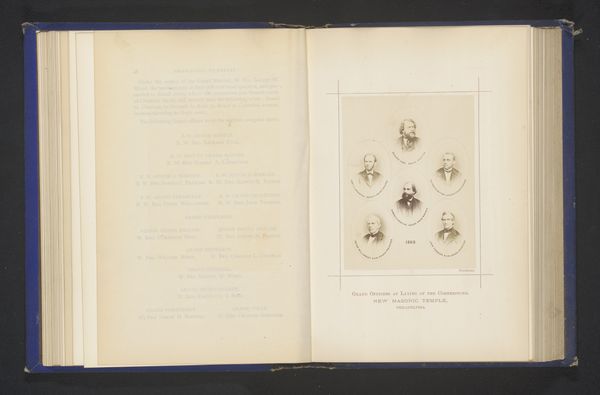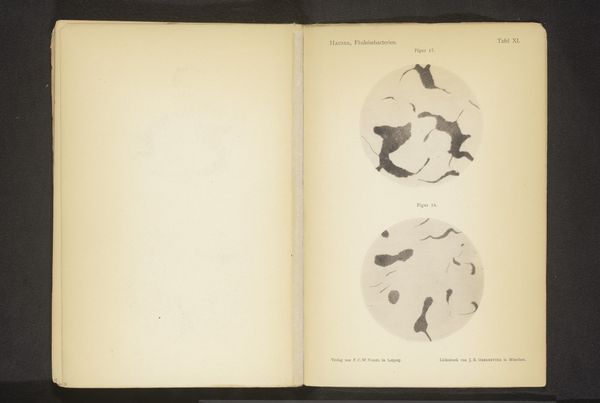
Tien portretten in medaillon-vorm van de uitvoerende commissie van de Wereldtentoonstelling van Antwerpen in 1894 1896
0:00
0:00
print, photography
#
portrait
# print
#
photography
#
group-portraits
#
history-painting
#
academic-art
Dimensions: height 157 mm, width 216 mm
Copyright: Rijks Museum: Open Domain
Editor: This print from 1896 by Th. Lantin showcases ten portraits of the executive committee for the Antwerp World Fair in medallion form. There's a formality to it, a stiff upper lip almost. It's interesting to see a historical record presented in this way. What story do you think it tells? Curator: It tells a story of power, class, and the careful construction of historical narratives. Think about the World's Fair itself – it was a stage for nations to assert their dominance through displays of technological and colonial prowess. This group portrait, with its members presented in a neat, almost scientific arrangement, reinforces that idea. What does it say about who gets remembered, and how? Editor: So, it's not just a picture of some guys who ran a fair? It's a statement about Belgian society at the time? Curator: Precisely. Look at who's included – undoubtedly men of influence and means. This image freezes a specific social hierarchy in time. How does this official portrait compare to the lives of those who were marginalized or excluded from the narrative of progress showcased at the fair? Where are their portraits? Their stories? Editor: That's a really good point. I was focusing on the individual portraits but missed the larger picture, so to speak. This isn't just a record; it’s a carefully curated image of power. Curator: Exactly. And by analyzing these visual choices, we start to unpack the power dynamics embedded within seemingly straightforward historical documents. Perhaps next time, we can question similar historical document and understand the social and political context. Editor: This has made me rethink what it means to "read" a historical document, photographic or otherwise! Thanks.
Comments
No comments
Be the first to comment and join the conversation on the ultimate creative platform.
